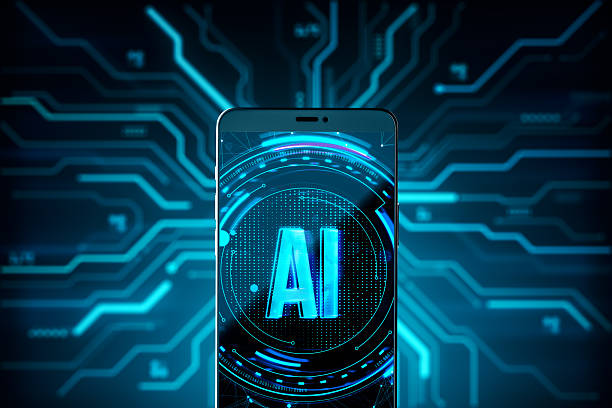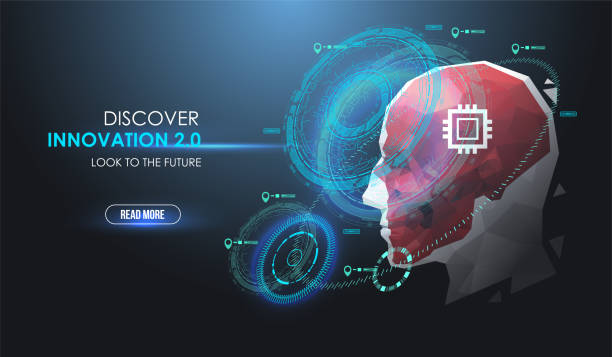An Introduction to Smart AI Robots
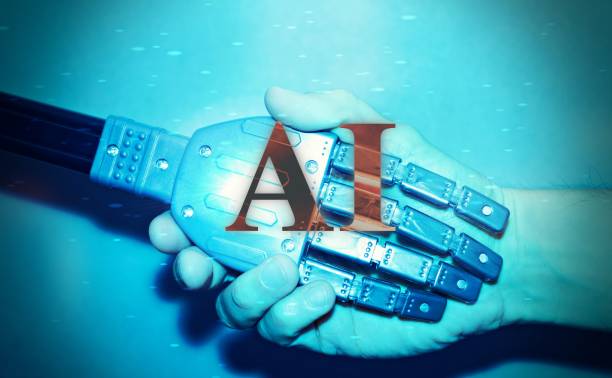
AI Robot is a pivotal element in the Fourth Industrial Revolution and a major step towards an intelligent future.
These autonomous machines, equipped with advanced #artificial_intelligence, have the ability to understand, learn, reason, and make decisions.
Unlike traditional industrial robots that only perform repetitive tasks, an AI robot can operate in dynamic environments and adapt to unexpected challenges.
These capabilities not only increase productivity but also open up new possibilities in various fields, from #industry to services and even daily life.
Understanding the nature and potential of this technology is crucial for anyone looking to prepare for the #future_of_technology.
Smart robots, using complex algorithms and massive data, can recognize patterns, predict, and even show creativity.
AI robots are no longer a science fiction concept, but an integral part of our present and future reality. This introduction is a step towards a deeper understanding of this transformative phenomenon.
From facial recognition systems to self-driving cars and surgical robots, the applications of smart robots are expanding daily.
The main goal of AI robot development is to create systems that can perform tasks traditionally requiring human intelligence, and do so with unprecedented speed and accuracy.
This field is constantly advancing, and every day we witness new innovations that push the boundaries of what a machine can do.
Does your current company website not reflect your brand’s credibility and power as it should? Rasavweb solves this challenge for you with professional company website design.
✅ Increase credibility and visitor trust
✅ Targeted attraction of more customers
⚡ Click for a free consultation!
The Historical Evolution of AI Robots and Their Path
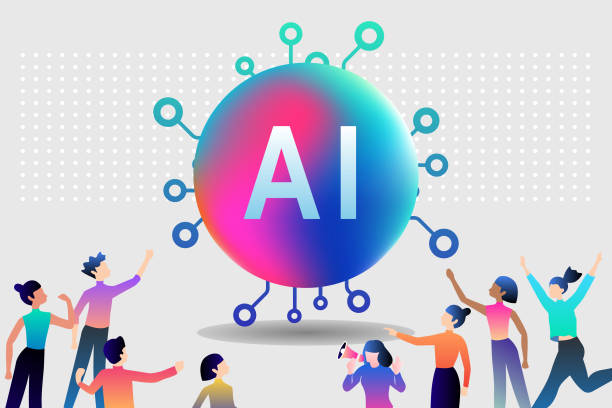
The evolutionary path of #AI_robots, from initial ideas in science fiction literature to today’s advanced realities, has been full of innovations and challenges.
In the early 20th century, writers like Karel Čapek, by coining the word “robot” in the play “R.U.R.”, sparked the first concepts of autonomous machines.
With the advent of computers in the mid-century, theoretical ideas of artificial intelligence emerged, and in the 1950s and 60s, with the Dartmouth Symposium, it was officially introduced as a scientific discipline.
This period saw the creation of the first mobile robots and simple robotic arms.
But the real progress of #AI_robots in recent decades began with increased computational power, access to massive data, and the development of machine learning and deep learning algorithms.
From industrial robots that performed repetitive tasks with high precision, we have reached a new generation of smart robots that can understand their environment, interact with humans, and even learn from their experiences. These #technology_trends indicate a paradigm shift from programmed robots to self-learning robots.
Today, AI robots are no longer confined to factories, but are used in hospitals, homes, and even in space.
This #robotic_advancement continues rapidly, and every day we see new reports of the astonishing capabilities of these machines, promising a future where human-robot interaction will reach an unprecedented level.
This evolution shows how an idea has transformed from the realm of imagination into a scientific and practical reality.
Underlying Technologies in AI Robot Construction
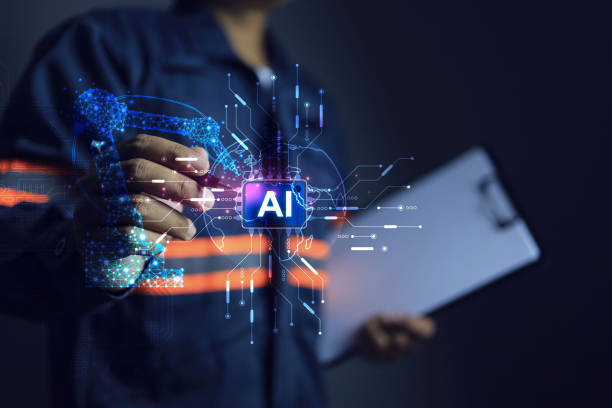
Producing an efficient #AI_robot requires a combination of complex and novel technologies, each playing a vital role in the capabilities of these smart machines.
At the core of these robots are #machine_learning algorithms, especially deep learning, which allow the robot to learn from data and make intelligent decisions.
This learning can include pattern recognition, behavior prediction, or performance optimization.
In addition, #computer_vision enables robots to “see” their environment and recognize objects, people, and obstacles; this ability is essential for navigation, object manipulation, and safe interaction with humans.
#Natural_Language_Processing (NLP) is another pillar that gives AI robots the ability to understand, interpret, and generate human language, which is crucial for voice and text interactions.
Advanced sensor systems, such as touch, motion, temperature, and distance sensors, collect vital environmental information, while actuators provide the ability to move and physically manipulate.
It is this combination of software intelligence and hardware capabilities that enables the #AI_robot to perform complex tasks in the real world.
Each of these technologies is a vast field on its own, but their intelligent combination reveals the true power of an AI robot.
Below is a table of key technologies:
| Technology | Description | Role in AI Robot |
|---|---|---|
| Machine Learning | Algorithms that allow systems to learn from data. | Decision-making, pattern recognition, behavior prediction |
| Computer Vision | Ability to understand and interpret images and videos. | Navigation, object recognition, visual interaction |
| Natural Language Processing (NLP) | Ability to understand, interpret, and produce human language. | Voice interaction, chatbot, translation |
| Sensors | Devices that collect information from the physical environment. | Environmental perception, distance and temperature measurement |
| Actuators | Mechanical components that produce movement. | Movement, object manipulation, performing physical tasks |
These technologies are constantly advancing, and every day we see new integrations and significant improvements in the performance of #smart_robots.
Click here for more information on Machine Learning.
Types and Wide Applications of AI Robots

#AI_robots are no longer confined to factories; they cover a wide range of types and applications that have revolutionized daily life and various industries.
In terms of categorization, we can mention #industrial_robots that work in production lines for welding, assembly, and painting with unmatched precision and speed.
These robots typically operate in controlled environments.
In contrast, #service_robotics is growing and includes robots that operate in hospitals (for surgery or assisting nurses), homes (like robotic vacuum cleaners) and even restaurants (for food delivery).
Collaborative robots (Cobots) are also an advanced type of #AI_robot that can work alongside humans with high safety and efficiency, without the need for protective cages.
These robots are equipped with advanced sensors to detect human presence and prevent collisions.
Humanoid Robots, like Sophia, whose design resembles humans, are used in human interactions, education and research.
The applications of #robotics extend beyond industry and services; in the #healthcare sector, surgical robots increase operational precision and reduce patient recovery time.
In #education, robots are used as assistant teachers or interactive tools for learning languages and sciences.
In agriculture, robots help with precise pesticide spraying, crop harvesting, and soil health monitoring.
Even in space exploration and hazardous environments, robots have replaced humans.
Each AI robot, depending on its design and programming, has unique capabilities that make it ideal for a specific application.
This diversity in applications demonstrates the enormous potential of smart robots to solve complex problems and improve the quality of life.
Did you know a weak company website loses you many opportunities daily? Solve this problem forever with professional company website design by Rasavweb!
✅ Create a powerful and reliable image for your brand
✅ Targeted attraction of new customers and increased sales
⚡ [Get a free website design consultation]
The Impact of AI Robots on Society and Economy
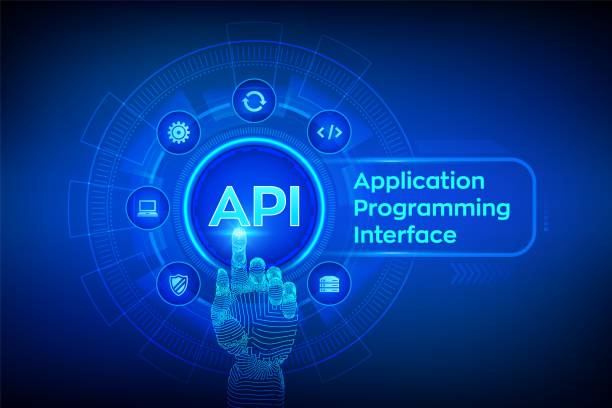
The widespread introduction of #AI_robots into various fields has profoundly impacted the structure of global society and economy.
One of the most significant concerns is the #impact_of_robotics on #employment; while robots can perform repetitive and dangerous tasks with high efficiency, there is a concern that they might eliminate millions of jobs.
However, history has shown that every technological revolution, while eliminating old jobs, also creates new employment opportunities.
In the case of #AI_robots, the demand for engineers, developers, data analysts, and robot maintenance specialists is increasing.
From an economic perspective, AI robots can lead to #economic_transformation and significant growth by increasing productivity and reducing production costs.
This can lower the price of goods and improve the quality of life for many.
However, the issue of inequality also arises; will the benefits of these advancements be distributed fairly?
From a social perspective, AI robots can change human interactions.
Nursing robots for the elderly, educational robots for children, and even companion robots for lonely individuals are all changing our communication patterns.
These issues raise deep questions about #AI_ethics, privacy, accountability, and a new definition of the #future_of_work and life.
How can we ensure that robotic advancements will benefit all humanity and not just a select minority? These questions require serious discussions and the enactment of appropriate laws to guide the development of AI robots in the right direction.
Without sufficient attention to these challenges, progress in robotics could lead to unintended consequences.
Challenges and Ethical Considerations in AI Robot Development
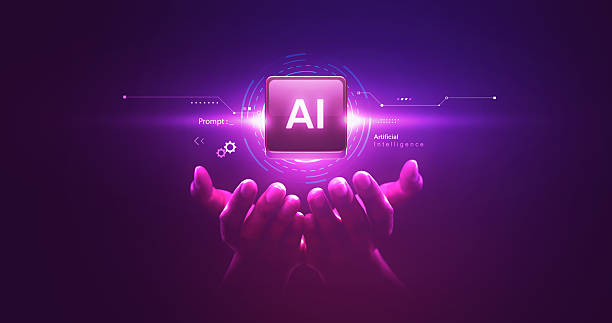
The development and deployment of #AI_robots, alongside their countless benefits, also bring serious challenges and ethical considerations that must be addressed to ensure a responsible future.
One of the most important of these challenges, is the issue of #algorithmic_bias.
If the training data on which smart robots learn contains human prejudices, the robot will reproduce and even amplify these biases.
This can lead to discrimination in hiring, loan approvals, or even in criminal justice systems.
Another challenge is the issue of #robot_responsibility in cases of error or harm.
When an AI robot makes an independent decision and harms a human, who bears the legal responsibility? The designer, manufacturer, user, or the robot itself? These questions require new and clear legal frameworks.
#Cybersecurity is also a major concern.
An AI robot that controls critical infrastructure (such as power grids or transportation systems), if hacked, could cause major catastrophes.
Protecting personal data collected by robots is also a privacy consideration.
How can we ensure that the increasing autonomy of robots does not become a threat to humanity? This fundamental question in the discussion of #AI_ethics, requires deep philosophical and technological debates.
Establishing international laws, safety standards, and regulatory bodies to guide the development of AI robots in a safe and ethical direction, is of paramount importance.
Without sufficient attention to these challenges, progress in robotics could lead to unintended consequences.
Future Trends and Predictions in the Field of AI Robots
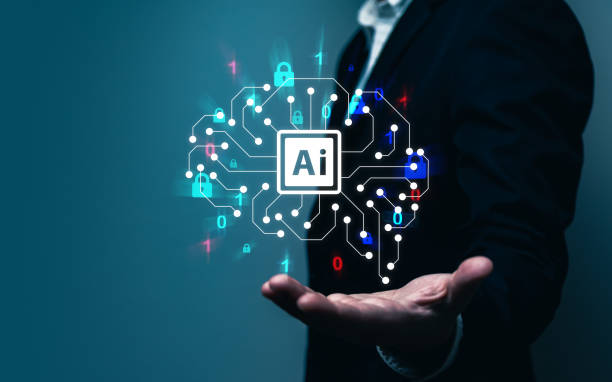
The future of #AI_robots is taking shape at lightning speed, with predictions indicating significant transformations in the coming decades.
One of the main trends will be the further development of #collaborative_robotics, where robots will not only work alongside humans but will also act as tools to enhance human capabilities.
We expect to see an expansion of Autonomous Robots, capable of performing complex tasks and making decisions in dynamic environments without direct human intervention.
These robots will revolutionize fields such as autonomous driving, space exploration, and logistics.
The integration of robotics with other emerging technologies such as #Internet_of_Things (IoT), 5G, and cloud computing will open up new possibilities for #AI_robots.
This combination allows robots to communicate with each other and their environment in real-time and share data, leading to the creation of #smart_cities and fully automated factories.
Furthermore, advancements in smart materials and Soft Robotics are expected to lead to the creation of robots that resemble living organisms more closely in appearance and movement, enabling them to work in sensitive environments or engage in more delicate interactions.
Discussions around Artificial General Intelligence (AGI) and Superintelligence will also gradually become more serious, although many experts believe reaching these levels of machine intelligence is still decades away.
These predictions suggest that #AI_robots are not just tools, but partners in building our future.
Below is a table of visionary applications for these robots:
| Field | Visionary Application of AI Robot | Explanation |
|---|---|---|
| Medicine and Health | Autonomous surgical robots, smart nursing robots, AI-based disease diagnosis | Increased surgical precision, home patient care, early disease detection |
| Space Exploration | Autonomous exploration robots for other planets, orbital repairs | Reduced risks for humans, increased speed and accuracy of explorations |
| Smart Homes | Multi-functional domestic robots, smart personal assistants | Automated home management, assistance for the elderly and disabled |
| Education and Research | Personalized robotic teachers, smart laboratory assistants | Adaptive learning, acceleration of scientific research |
| Smart Agriculture | Autonomous planting and harvesting robots, crop health monitoring | Increased productivity, reduced resource consumption, precision agriculture |
This is a future where smart robots will play a pivotal role in all aspects of life.
How to Interact Effectively with AI Robots
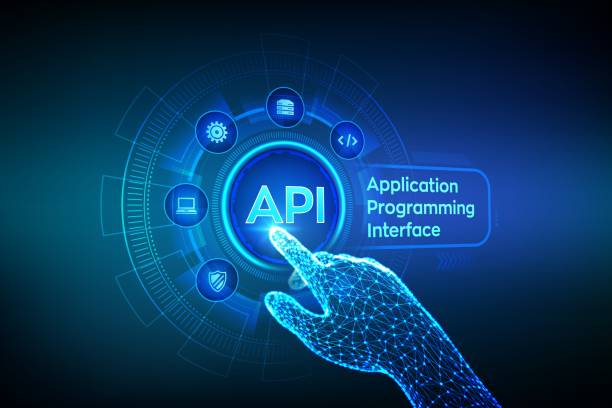
With the increasing presence of #AI_robots in work environments and daily life, understanding how to #interact_effectively_with_robots is crucial for maximizing their potential.
The first step, is to understand the robot’s current limitations.
While smart robots have amazing capabilities, they are not yet able to fully understand human intentions and complexities.
Therefore, instructions must be clear, precise, and unambiguous.
For #smart_communication with voice robots like smart assistants, use natural language and complete sentences.
If the robot does not respond appropriately, try rephrasing your statement or providing more information.
For physical robots, adherence to safety protocols is of paramount importance.
Always follow the manufacturer’s instructions and avoid entering the work area of industrial robots without proper safety equipment.
Robot training and adaptability also play an important role.
Many AI robots have the ability to learn from previous interactions.
By providing correct feedback and repeating tasks, you can help the robot improve its performance.
Sometimes, interacting with an AI robot can be similar to training a new colleague; it requires patience, clarity, and repetition.
Also, curiosity and controlled experiments can be a #fun aspect of interacting with #AI_robots, provided they are conducted within permissible safety and operational frameworks.
By correctly understanding their capabilities and limitations, we can utilize robots as powerful tools and intelligent companions in life and work.
This #practical_guide helps you interact with these new technologies with more confidence.
Are you dissatisfied with the low conversion rate of visitors to customers on your e-commerce site?
Solve this problem forever with professional e-commerce website design by Rasavweb!
✅ Increase visitor-to-customer conversion rate
✅ Create an excellent user experience and build customer trust
⚡ Get free consultation
Learning and Development Paths in the Field of AI Robots
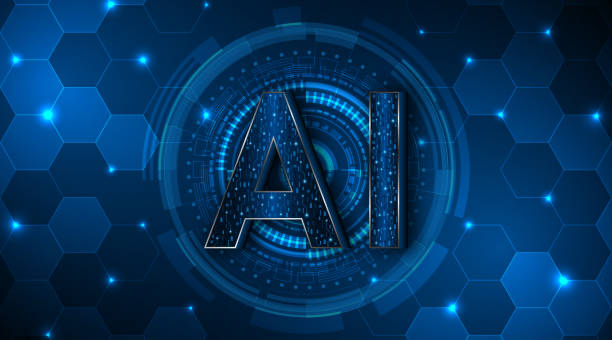
For those interested in entering the world of #AI_robots and participating in its development, there are multiple learning paths and resources.
Understanding the fundamental concepts of #robotics_programming, especially with languages like Python and C++, is the starting point.
These languages provide powerful tools for robot control and implementing AI algorithms.
In addition to programming, studying in the fields of #data_science, #machine_learning and deep learning is of high importance.
Familiarity with popular AI libraries such as TensorFlow and PyTorch, as well as robotic frameworks like ROS (Robot Operating System), helps developers manage more complex projects.
University degrees in computer engineering, robotics, artificial intelligence, and electronics can provide a strong scientific foundation. However, given the rapid pace of advancement in this field, self-learning through online courses, educational platforms like Coursera, edX and Udemy, and also studying scientific articles and participating in workshops, plays a key role.
For practical experience, working with educational robotic kits, participating in robotics competitions, and undertaking personal projects are recommended.
Building a simple #AI_robot from scratch, though challenging, is a very valuable experience.
Also, joining online communities and networking with experts in this field can help in knowledge exchange and finding opportunities.
Ultimately, to succeed in the field of #applied_artificial_intelligence and robotics, a combination of strong theoretical knowledge, practical programming skills, and a problem-solving mindset is essential.
This learning path requires continuous commitment to updating knowledge, as this field is rapidly evolving.
AI Robots on the Threshold of a New Era

As discussed in this article, #AI_robots are more than just a technological innovation; they are a phenomenon on the verge of shaping a new era of human civilization.
From increasing industrial productivity and transforming healthcare services to providing personalized educational experiences and space exploration, the impact of these robots is evident in all aspects of human life.
However, the accelerating progress in the field of #comprehensive_robotics also raises deep questions and challenges.
How can we ensure the responsible development of this technology? What mechanisms are needed to prevent biases, ensure security and define ethical frameworks? The answers to these questions will determine the path of #humanity’s_future in the robotic age.
Human-robot_coexistence is no longer an option, but an inevitable reality. This coexistence requires mutual understanding, education, and continuous adaptation.
Governments, companies, universities, and individuals must collaborate to develop policies, standards, and cultures that allow for maximizing the potential of smart robots while minimizing potential risks.
Ultimately, #AI_robots are not only powerful tools for solving complex problems but also mirrors reflecting our intelligence, creativity, and ethical choices.
A future built with #responsible_technology can be one where humans and robots move forward in complete harmony, towards progress and prosperity.
This exciting journey has just begun.
Frequently Asked Questions
| Question | Answer |
|---|---|
| What is an AI robot? | A robot that uses artificial intelligence capabilities to understand the environment, reason, learn, and make decisions to perform complex tasks independently. |
| What is the main difference between a regular robot and an AI robot? | AI robots can learn and adapt to their environment, while regular robots typically operate based on fixed, pre-programmed instructions. |
| In what fields are AI robots used? | In fields such as industry (production lines), medicine (robotic surgeries), services (customer support, smart vacuum cleaners), exploration (space and underwater), and entertainment. |
| How do AI robots learn? | They acquire new skills through Machine Learning and Deep Learning algorithms, by analyzing large data and identifying patterns. |
| Can AI robots have emotions? | Currently, no. They can identify or simulate emotions, but they do not experience actual emotions like humans. |
| What are the most important advantages of using AI robots? | Increased productivity, reduced human error, performing dangerous or repetitive tasks, and providing new and efficient services. |
| What challenges exist in developing AI robots? | The need for abundant and quality data, complexity of algorithms, ethical issues, cybersecurity, and high research and development costs. |
| Are AI robots dangerous to humans? | With adherence to safe design principles and ethical regulations, no. Concerns are mostly related to social and economic impacts such as changes in the job market. |
| What is an example of an AI robot in daily life? | Smart robotic vacuum cleaners (like Roomba) that autonomously map and clean the house, or smart voice assistants (like Siri and Alexa). |
| How is the future of AI robots predicted? | They are expected to become smarter, more autonomous, and capable of more complex interactions with humans, playing a more significant role in industry, medicine, transportation, and daily life. |
And other services of Rasavweb Advertising Agency in the field of advertising
Smart Marketing Automation: An effective tool for increasing website traffic by using real data.
Smart SEO: A fast and efficient solution for online growth with a focus on precise audience targeting.
Smart Data Analysis: A combination of creativity and technology for online growth by using real data.
Smart Conversion Rate Optimization: A creative platform for improving sales increase with intelligent data analysis.
Smart Brand Identity: A creative platform for improving website traffic with attractive user interface design.
And over a hundred other services in the field of internet advertising, advertising consultation, and organizational solutions
Internet Advertising | Advertising Strategy | Advertorial
Resources
The Future of AI Robotics in IranThe Impact of AI Robots on SocietyInnovations in Smart RobotsDevelopment of Robotics and Artificial Intelligence
? Is your business ready to leap into the digital world? Rasavweb Afarin Digital Marketing Agency, by offering specialized services including SEO-optimized website design and comprehensive online marketing strategies, paves your path to growth and visibility. With us, have a powerful presence on the web.
📍 Tehran, Mirdamad Street, next to Bank Markazi, Kazeroon Janubi Alley, Ramin Alley No. 6

